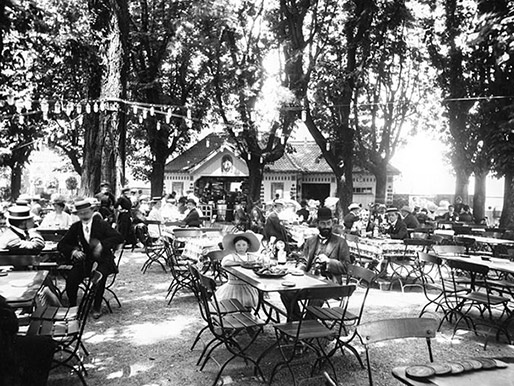Beer Gardens and the Picnic
The great majority of beer gardens in rural areas sprang up out of a need for farmers and day laborers would toil all week in the fields, by the time Sunday came around they were all ready to relax and enjoy the company of others after church with food and drink. Local farmers would open their fields to the community to come picnic and drink beer. Children would play games as adults listened and danced to polka music played by their friends and neighbors, beer gardens were a community gathering every Sunday. There were no underground caverns where the beer was stored as had been the case in the Old World, and breweries were not selling beer to the community. These gardens were little more than picnics where the community would come together, bringing their own homebrews and food. Beer was undoubtedly the center piece of these gatherings, if not, we may be calling these events community picnics rather than beer gardens.

The beer gardens became more popular, not only for farmers but the general public, business minded men created beer gardens to meet the demand. In large cities beer gardens were created in large halls with frescoes of images of Old World beer gardens where the affluent would frequent. The entertainment became more sophisticated and more games were offered. Even bowling lanes were constructed. These deft businessmen designed menus with salty foods to increase beer sales, had professional musicians perform and many attractions.
In Wisconsin, competition was so fierce, "Lueddemans's Garden, for example, once featured a 'daring and beautiful' female performer who set fire to herself and plunged 40 feet into the river below, much to the delight of on-lookers." (Yesterday's Milwaukee) The vast majority of beer gardens in Wisconsin were run by the Breweries, with the largest being Schlitz Gardens.